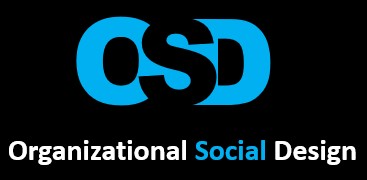6 years ago, shortly after I turned in my resignation to move on to a larger leadership role, the COO of my company called me to his office in an effort to convince me to stay. At the end, when he knew I wanted to move on, he asked me a question I never saw coming.
“Mark, honestly, do we even need a training and development department?”
My answer in that moment is irrelevant. What is important is that it planted a seed that has been growing ever since. A seed that has led to my own question of “what if training was not an option?” For many organizations it isn’t an option. Learning and development happens more informally, socially in the small, growing businesses. I noticed more and more and began to look upstream, coming to the conclusion that organizational structure itself may hold the answer to ideal performance. If we tweak the systems which influence behavior, we could increase learning in the flow of work and scale learning as the company grows, truly create a learning organization.
I argue that if organizations gave more attention to the human and technical systems, they would have far fewer needs for training and other formal interventions. What I’m positioning then is a related subset of organizational design, something I’ll just call Organizational Social Design (OSD) to give it a label. It’s certainly not original. Guy Wallace was kind to share the work Geary Rummler PhD and communication as well as systems theory appears baked in too.
According to one definition, “Social design, a term whose roots go back several decades, fully entered the lexicon around 2006. It refers to the design of relationships, including those that are invisible and intangible.” This definition goes on to speak mostly of communities and society but if we take this broad definition in the context of an organization, OSD compliments and enhances organizational design. Simply, it’s the modifying of organizational systems and processes (the soft stuff) in ways that improves communication and knowledge sharing within your current structure (the hard stuff). So it’s not about changing or removing titles, roles, and departments, it’s about making connecting and learning in work easier if not more natural.
Some systems that would be top of mind would be:
- Workflows – where, how, when and with who work gets done
- Compensation – reward systems for accomplishments
- Recognition – how people get noticed for contributions
- Management – coordination v. control with an emphasis on employee growth
- Decision-making – opportunities for input to increase motivation
- Knowledge Management – what and how information is shared and whom
Each of these plays a large role in influencing behavior around communication and knowledge sharing which in turn impacts engagement and trust. But how then does this work with organizational design?
I’ll use one of the most popular org design models, Jay Galbraith’s Star Model from the 1960’s, to explore. According to Galbraith’s consultancy website, “The framework consists of a series of design policies that are controllable by management and can influence employee behavior. The policies are the tools with which management must become skilled in order to shape the decisions and behaviors of their organizations effectively.”
In the Star Model™ there are five categories:
- Strategy
- Structure
- Processes
- Rewards
- Selection and Development of People
Each of these are pretty common but once established formally or informally the human connection points can be dampened or removed altogether (Why do you think so many are concerned about culture??). A few questions for each point (mindful of the social component):
- Does the strategy burn people out?
- Do the structures lead to knowledge silos?
- Do the processes inhibit creativity and innovation?
- Do rewards only focus on individuals and outputs?
- Does employee selection and development only meet the needs of today?
Social is the matter between the structure, with people being the engine to ensure each of these design policies work together cohesively. It’s easier of course when a company is small and growing but when the right mindset meets the right behaviors and the right technology, the ability to scale continuous connection and learning can be realized.
I invite you of course to explore this all with me.


